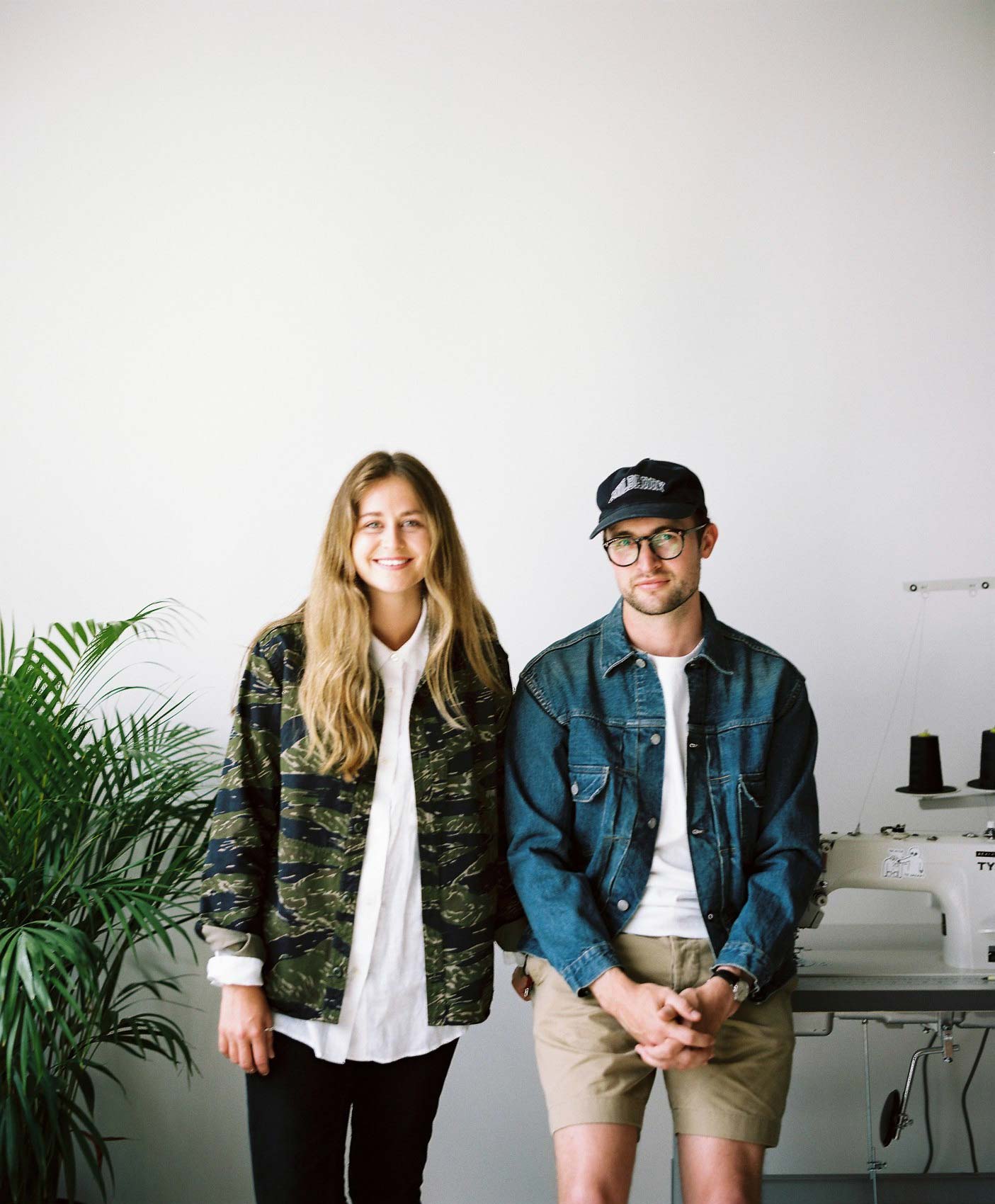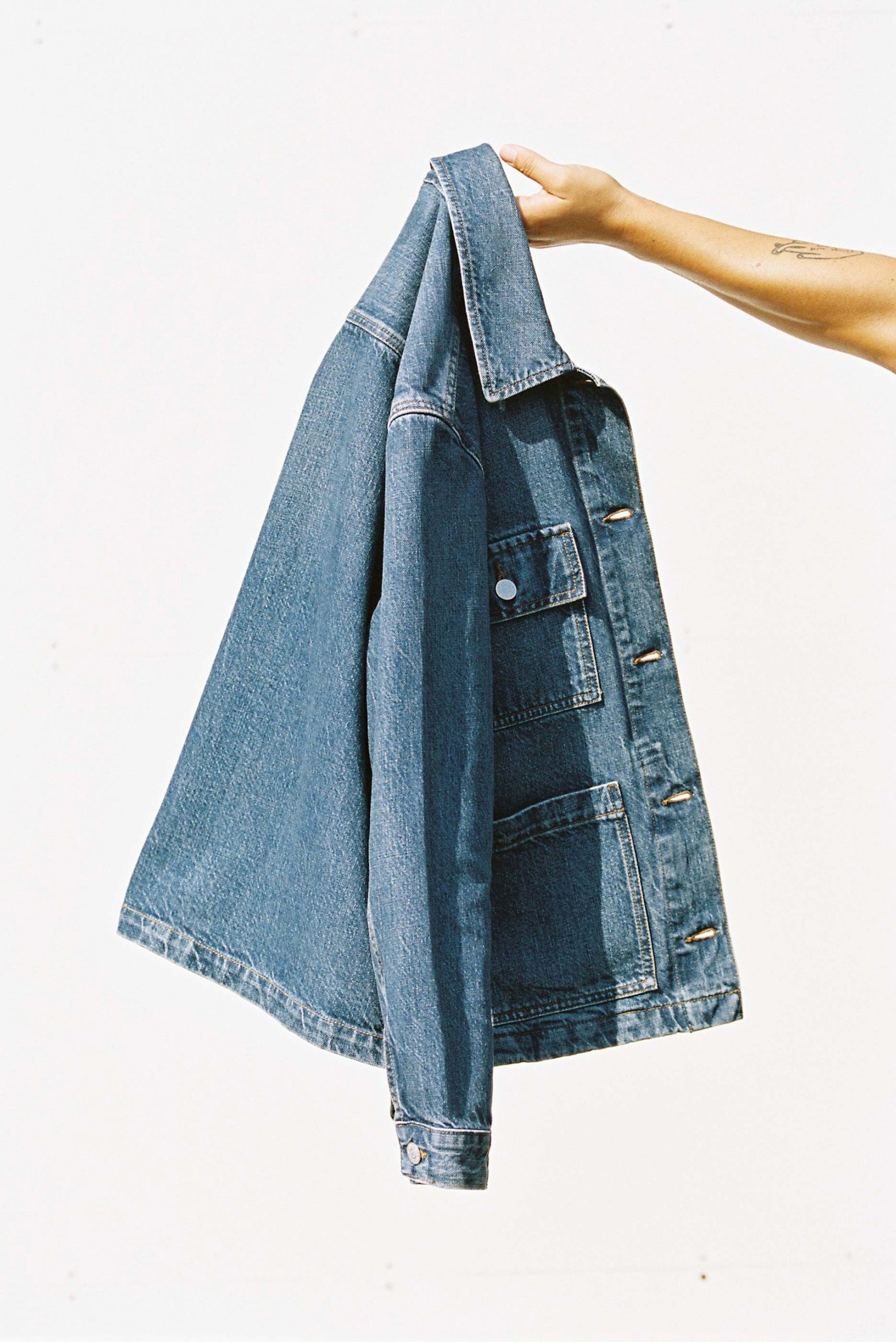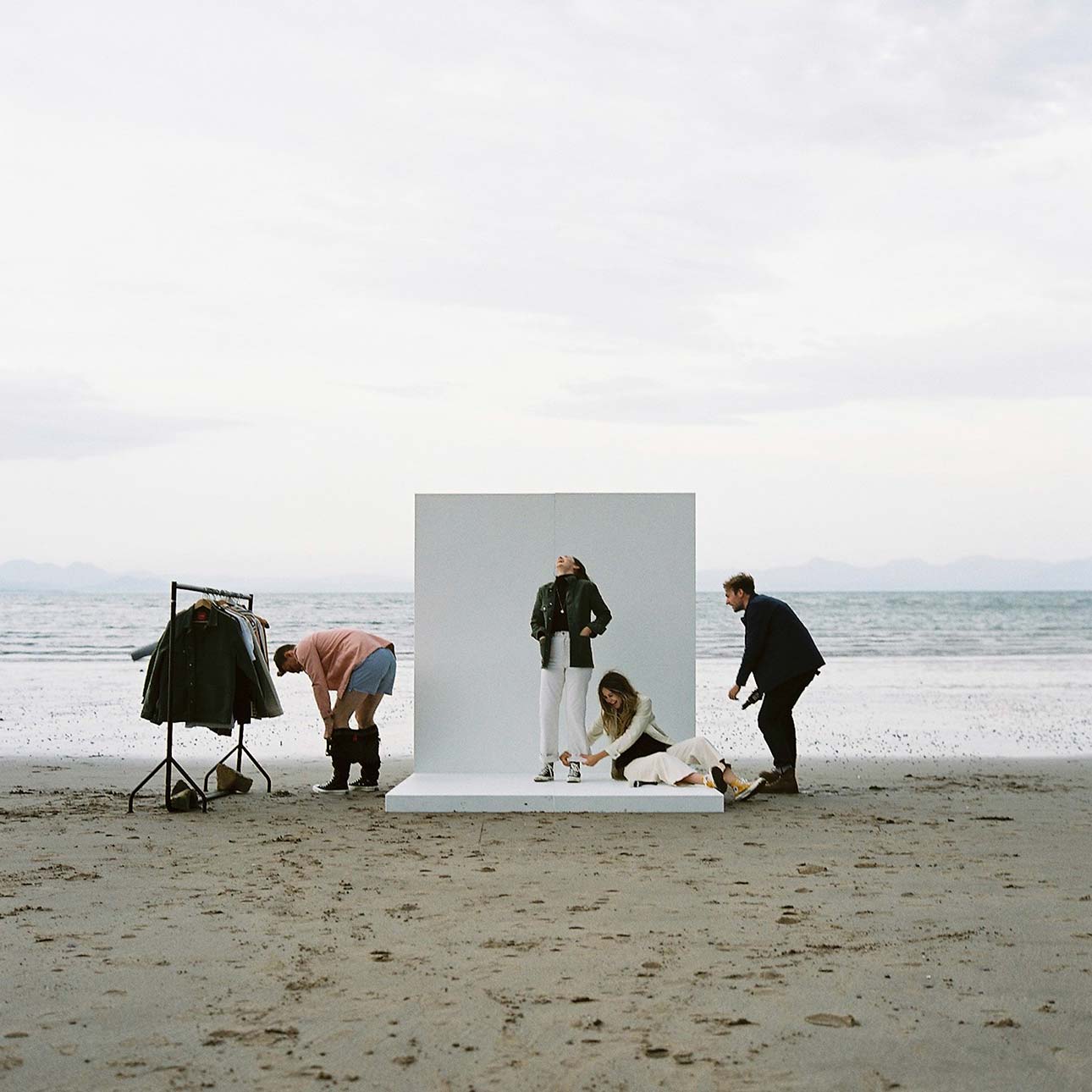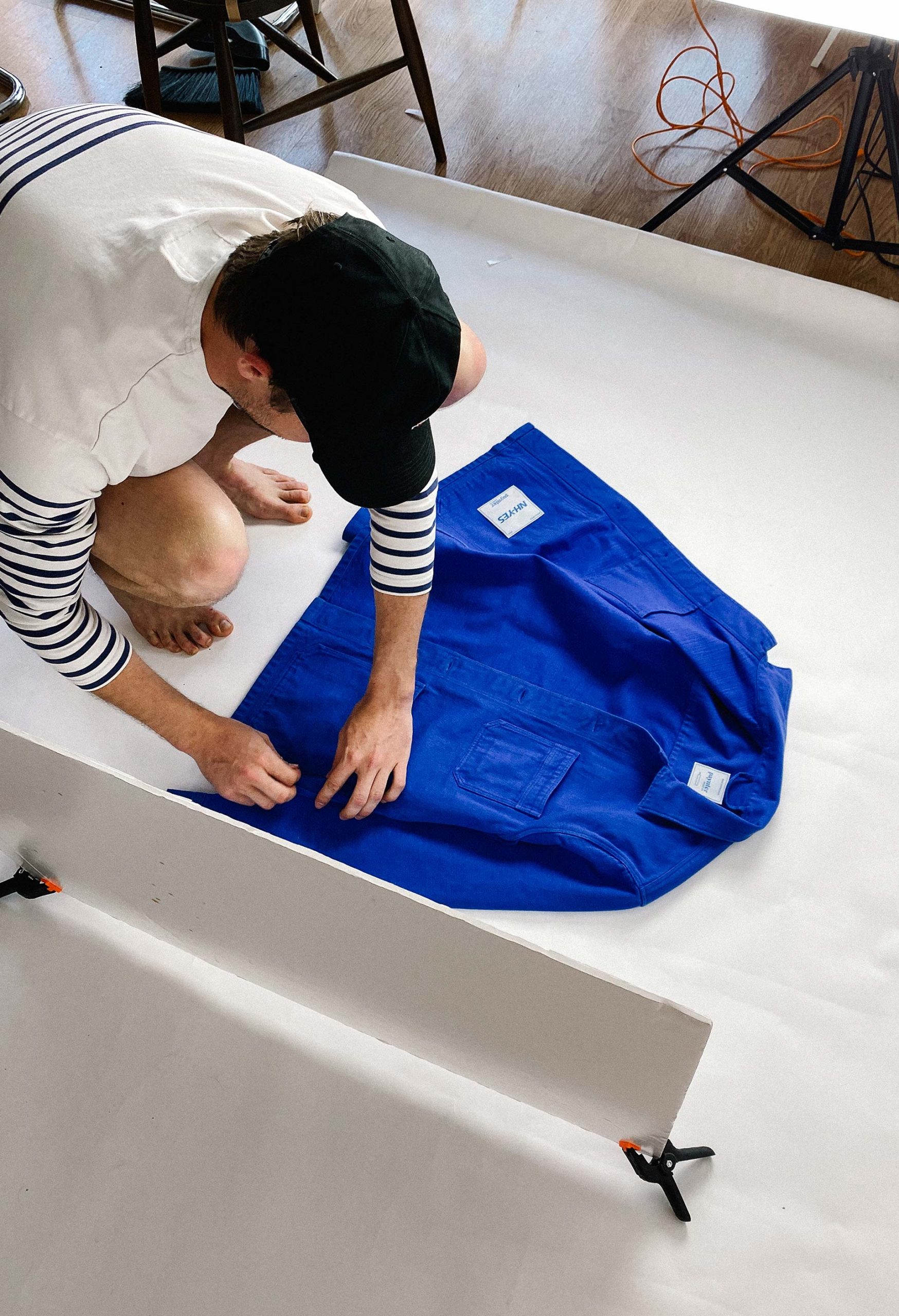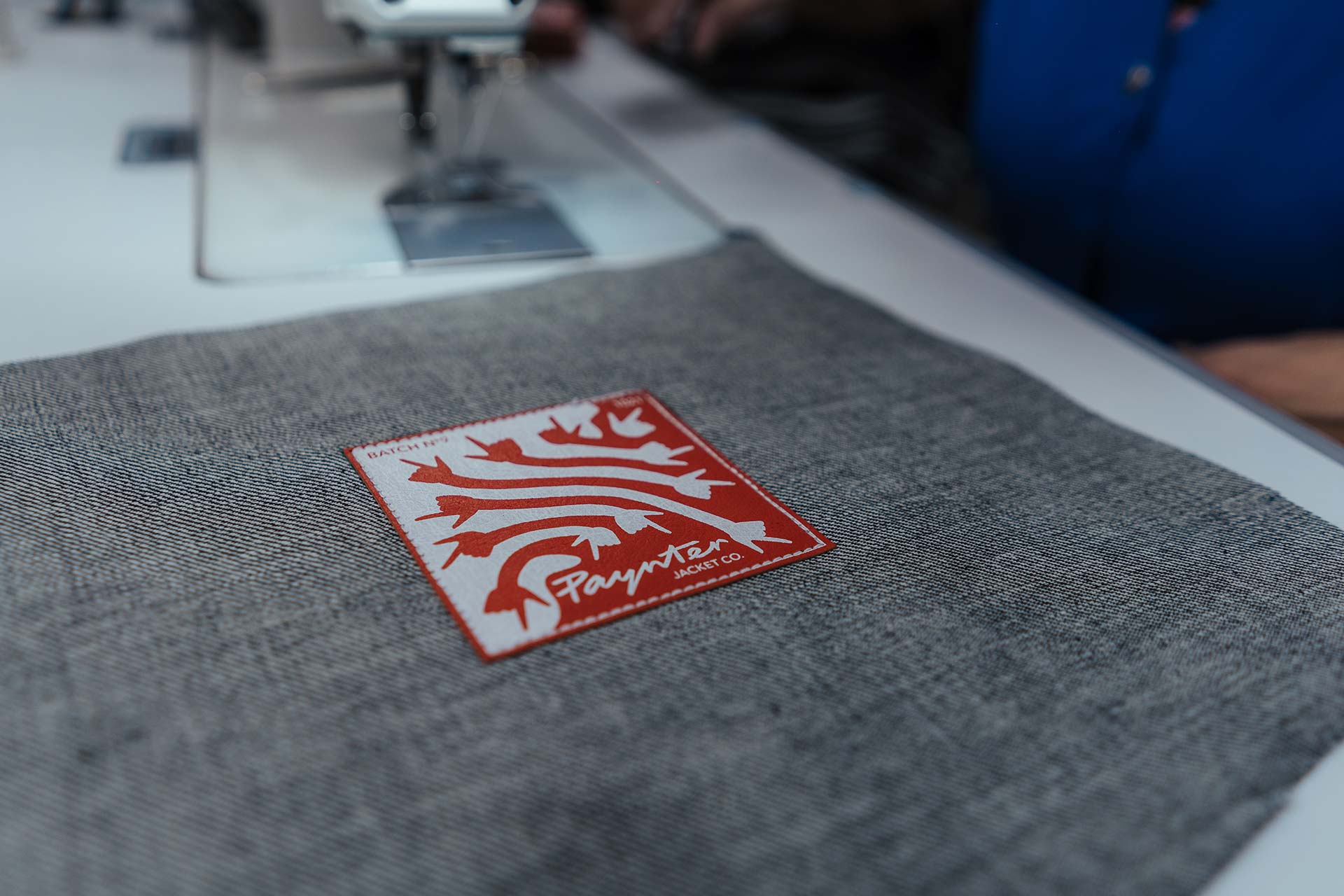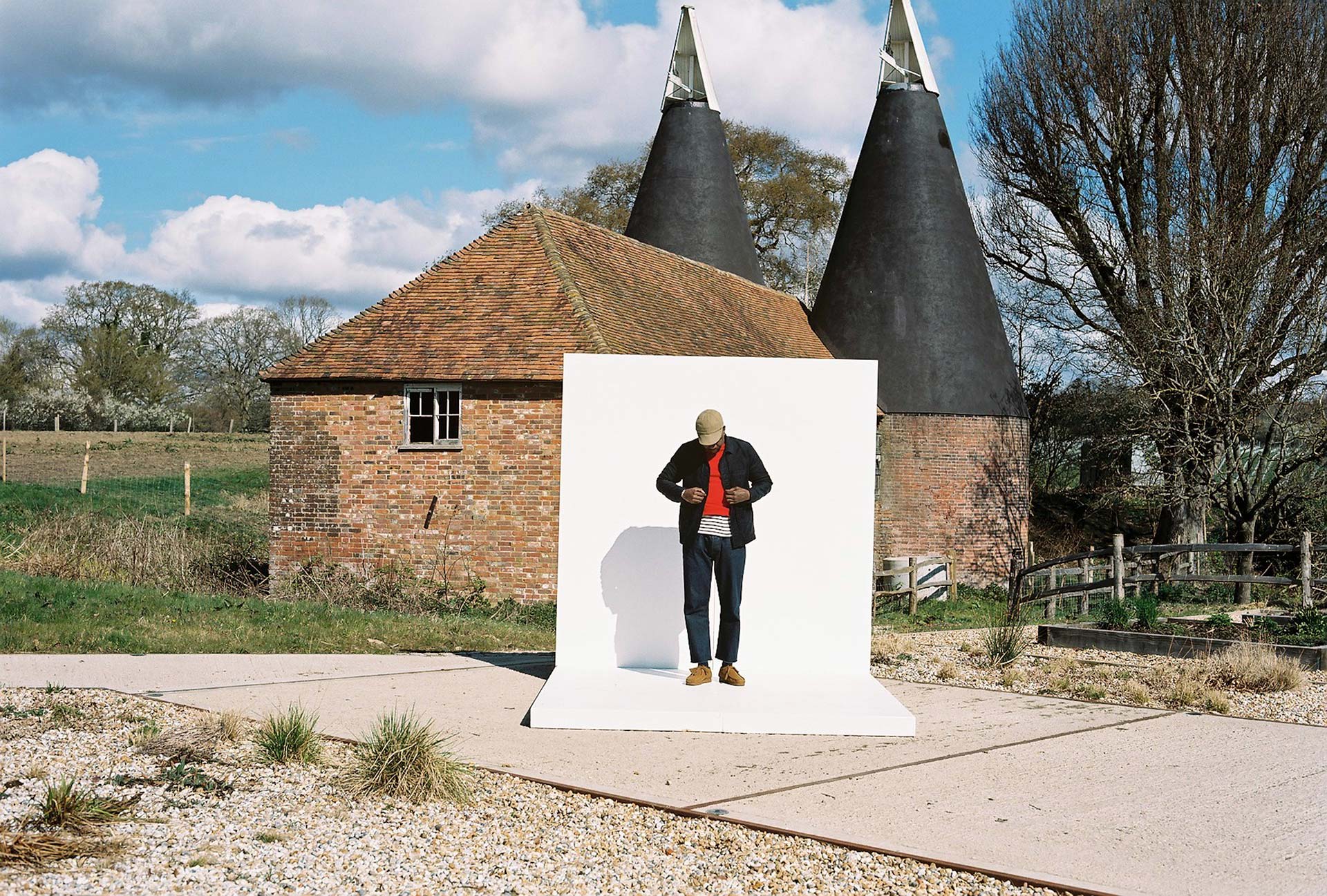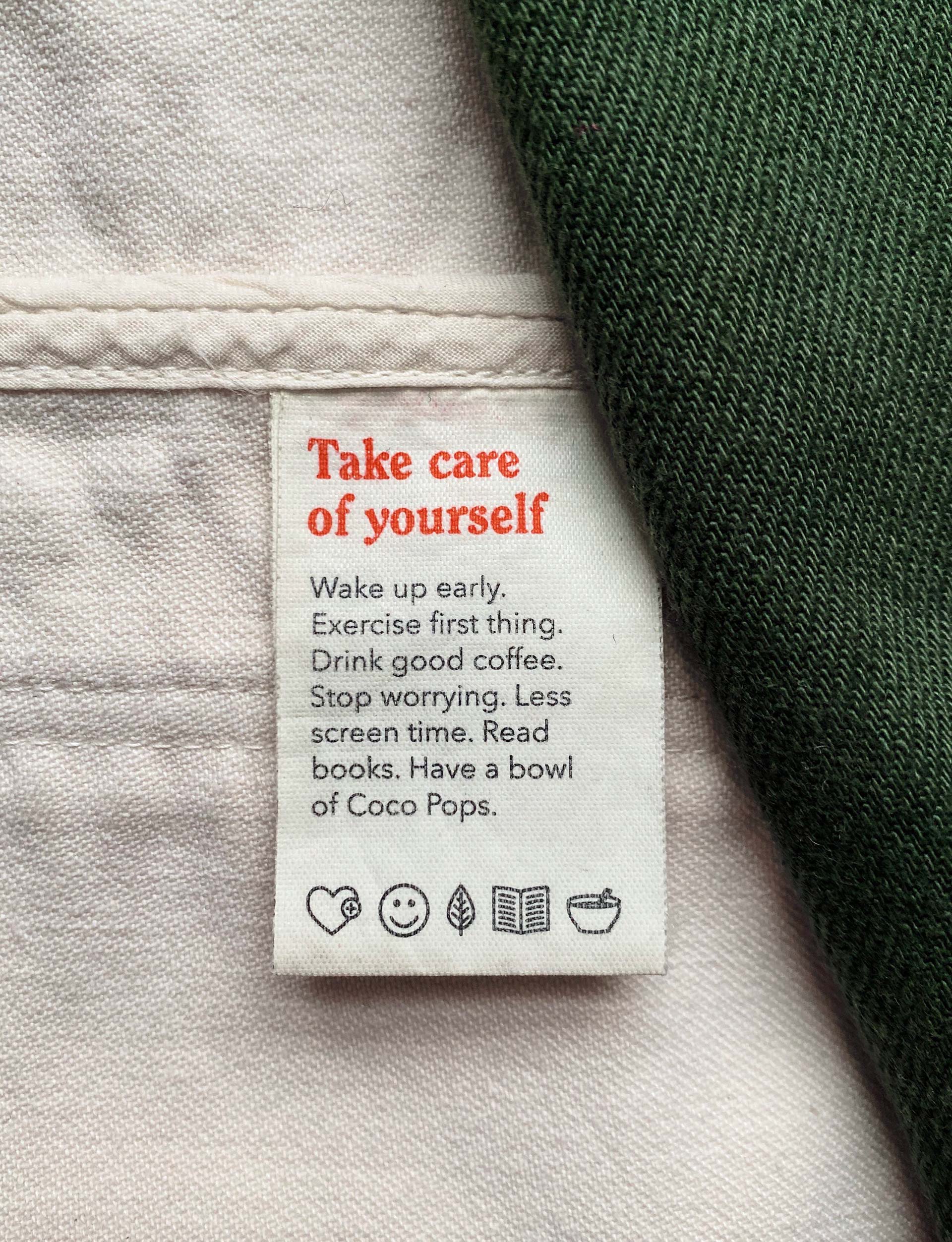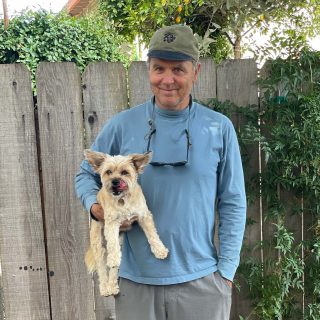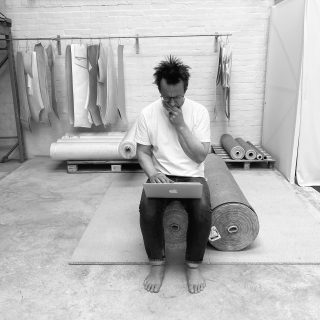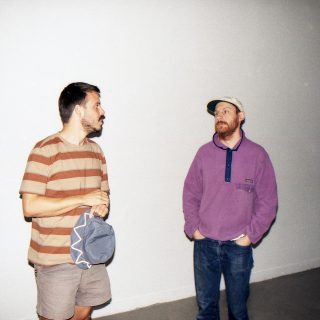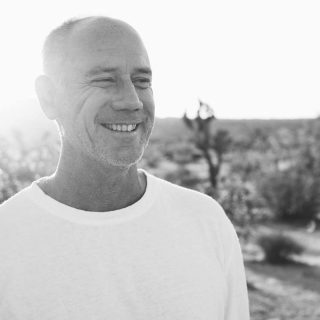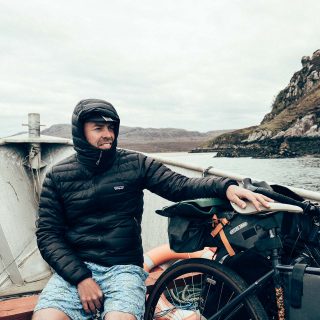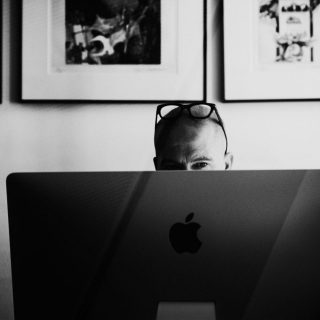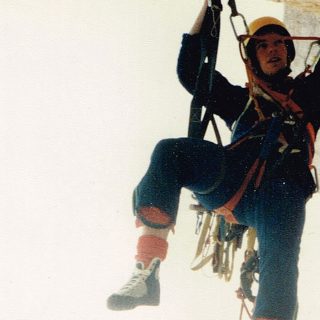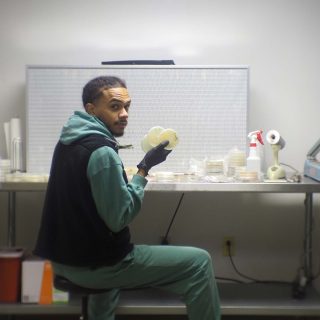An Interview with Becky and Huw, founders of Paynter Jacket Co
Our interview with the people behind Paynter
The world of clothing spins on a strange axis—shorts and t-shirts land up in January, jumpers and winter coats arrive in the midst of summer, and you’re only ever five minutes away from receiving a sale email written in full capital letters.
Paynter march to a decidedly different drum. Operating made-to-order and direct–to-consumer, this lot have sidestepped the endless carousel by selling their expertly crafted jackets (and shirts) in limited batches, just a few times a year. In an age when you can get pretty much any item of clothing posted to your door in days, Paynter prove that you can do the exact opposite, and have built a dedicated following of fans who think nothing of waiting eight weeks for their jackets to be made.
As they geared up for the launch of a batch of seriously swanky spread-collar shirts (which will be sold out by the time you read this), we called them up to talk about the beauty of staying small and why speed isn’t everything…
Just before this call you two were unpacking a delivery—it seems like you’re still very small-scale and all-hands on deck. Is that a conscious thing?
Becky: I don’t think we’d want it any other way. It was definitely an intentional thing from the beginning to keep things small and manageable. Even though a lot of people would hate packing up orders and writing notes to customers, we really love that bit. I think when you design something, then you actually get the delivery in and then pack every jacket, it’s only then that you really know the quality of what you’re sending—and we always want to be involved with that because it makes our product better and better.
Huw: We want to show that it can be done with such a small team. Our whole thing from the start was “We don’t like how the rest of the industry is doing it, what if we did the complete opposite?”
Subscribe to our newsletter
It seems like with any job the ‘higher up’ you get, the more detached from the interesting stuff you become. Staying ‘on the tools’ keeps you in touch with things a lot more.
Becky: Definitely. We both loved the hands-on nature of every part that’s involved with the business—and as soon as you start managing teams you’re not doing any of that practical creative stuff anymore.
We wouldn’t love coming to work every day if we had teams to manage and investors breathing down our necks. We really love the flexibility—and it puts the fire in your belly too because you have to make it work. We like the freedom and the level of experimentation we can do when there’s just the two of us making the decisions.
“We wouldn’t love coming to work every day if we had teams to manage and investors breathing down our necks.”
Huw: Doing it this way and selling only direct means we can use the highest quality materials and makers, without compromise, and passing on those pieces to customers at fair prices, without the wholesale markup. There’s no one telling us , “That fabric is too expensive.” We don’t really talk about that side of the business much, but we operate in a totally D2C way and end up making very limited edition, special pieces at the same price J Crew charge for a plain shirt.
That’s not something I’d thought about before, but I suppose selling straight to customers means there’s less of that thing of ticking the boxes.
Becky: And it means we get to have direct conversations with our customers too—whether that’s feedback about the clothes, or about what people actually do in their clothes, we’ll hear all sorts of stories like jackets worn when proposals were made! People stay in touch and it continues to be a conversation—and I think that means that people take better care of their clothes too.
Huw: I can’t imagine what it’d be like if we took that away.
What was the initial spark that led to Paynter in the first place?
Huw: I had this old French workwear jacket—the fit was great and the construction was really, really good. I wore it at a family weekend with Becky’s family, and everyone loved it. So Becky took it, and started wearing it, and I was like, “I miss that jacket.” So we thought ‘why not try and remake it’? And why not document remaking it? And a couple of months into that, people started asking if they could buy the jacket. So that’s when we realised that we actually had a brand.
Becky: It took nine months to get it right, because we were learning everything from scratch—finding fabrics, buttons and factories. We thought that if we were going to start a clothing company, we didn’t want to just add more stuff into the world that people didn’t really want or need—so we knew we had to use a pre-order model. Also, we were using our savings, so we couldn’t just pay for our whole production up front. Pre-order meant we could show our customers their pieces being made, in real-time from the factory. We started showing the whole journey via weekly videos from Batch No.1 and the updates have got a lot better since then.
When was this?
Huw: It was the 11th of May 2019 when we launched Batch No.1, but it was the end of August 2018 that we started, but it was a side project whilst we worked full time.
Becky: We hadn’t even considered what Batch No.2 would be. We just thought we’d make this one thing, and then they sold out in 14 minutes, which took us very much by surprise. And now we’re always trying to gauge the demand for each jacket—but that’s always a learning curve. For Batch No.2 we thought that everyone who wanted a jacket from us would already have one, so we just did a minimum order of 300 and they sold out within two minutes. It was only after Batch No.2 that we both quit our jobs and went full time.
Right from the start it seems like transparency has been a big part of what you do.
Becky: It was a conscious thing, and it’s become more and more a part of it. We didn’t know how people would react—we thought they’d think eight weeks to wait for a jacket would be so long—it’s the opposite of Amazon Prime. We hoped the process could be exciting, but then people told us how refreshing and different it was—and it was actually as much about the experience as it was the product.
It’s almost like going to an event—everyone who orders the same style goes on that journey of understanding how it’s made together, and then everyone receives theirs together. There’s so much more meaning because it’s made to order—because they’ve seen it right from when it was a piece of fabric being cut.
There’s more of a connection isn’t there when compared to something you just buy and get the next day? They know the work that’s gone into it, and they know they can’t just order another one.
Huw: And they’ll look after that piece better than something they just bought on a whim that came the next day. And that’s another part of that thing of making things that last longer.
Becky: It kind of helps to slow down consumption. It’s quite a feelgood alternative to an industry that quite often doesn’t feel good.
I suppose it’s like what David Hieatt, who I think you used to work for Huw, says—about how you can be influential even when you’re small.
Huw: He’d always talk about the different ways to grow—and how you don’t always have to grow in size by team or revenue, but you can grow in your influence or your creativity. It’s a totally different way of thinking. You can have a reputation that goes way beyond you. He’d maybe mention Rolls Royce—they don’t have many customers, but their reputation is massive.
We’re doing this for the long term—we’re not wanting to sell this thing—so we want to build a brand through our service and good product and good value, over a long period of time. We look at it a bit like coffee shops—there’s one we absolutely love called Wilton Way Deli—with great service and a really good vibe, and there’s only one of them. And that’s why it’s so good. We’d love to be the equivalent of that—this small, local business, rather than a Pret.
Becky: You lose things when you grow.
Things can get watered down pretty fast. When there’s 15 shops in a chain, you don’t get to go in and talk to the owner for half an hour. There’s not that knowledge.
Huw: There’s a store in Copenhagen called Goods—and it’s just a really, really nice store. You go there and the person who owns it is there, the service is good and they have really good product. It’s just a lovely business.
Becky: And they’re more than happy to tell you about other businesses and shops you might like. With us, if someone comes to us and says, “We really want you to make a blazer.” We’re not afraid of saying, “Well, for a suit, you might want to go to Universal Works for that, because we’ve got no current plans to make one.” We’re way happier to say that, rather than be like, “Yeah, maybe one day,” and then it never happens.
I’ve noticed that with Paynter—there’s an openness. You’re not afraid to mention other brands on your website.
Huw: In our photoshoots a lot of the same items are being worn—there’s a battered grey Champion hoodie that we used for Batch No.5 that’s still being worn in the photoshoot for Batch No.15. We like to show that you can reuse pieces—you don’t have to buy everything new all the time. Your mind shouldn’t be taken up shopping 24/7—buy something, then go and do something more fulfilling.
How do people break out of that thing of endlessly buying clothes?
Huw: I think it’s about looking at where the need comes from. Is it the industry that’s pushing it? Or are you in a scene, like the menswear scene for example, where you constantly need to be in the know and be wearing the right stuff? Or are you comfortable within yourself to think, “I really like this—I’m comfortable in these clothes, so I don’t feel like I need to catch up with it.
Becky: Maybe it comes down to confidence?
Huw: Do you know Gauthier Borsarello? He owns a vintage archive in Paris and he’s the creative director of Fursac, and he did an amazing podcast with HandCut Radio a few years ago where he distilled the point so well.
Becky: He said, “I don’t care what you’re wearing—I think good style is good manners and being kind and being excited about what you’re into in life.” He didn’t talk about clothing at all in his answer, and he has such good style in all those ways. And I think we’d much rather be that. On our blog we like to talk much more about other things. We only make four times a year so that we don’t have to be selling constantly, and our customers don’t have to be buying constantly.
How do you go about choosing the styles you make? Are there certain limitations or rules as to what you will or won’t do?
Huw: We don’t plan on making things for below the waist. Whether you’re working with jeans or footwear, fit and sizing becomes a lot more complicated.
Becky: We love jackets and shirts, and we’ve got a very long list of the things we’d like to make. We’re probably working on three styles at any one time in various degrees of sampling and readiness. We’ve got lists everywhere of things we want to do. This year we’ve got a few more shirts and our Six Mile Tee. But yeah—we’re all about coats, jackets and shirts.
“We’re doing this for the long term—we want to build a brand through our service and good product and good value, over a long period of time.”
Huw: It’s getting that right balance—and trying to make sure things arrive at the right time. In the past we had a heavy corduroy jacket arrive in June. And that’s the hard thing about making to order—people need to be in the right state of mind to see themselves in cord. Even though it’s something someone will have for years, you still want to be in that time frame. It’s a very slow way of doing things, which I think some people might get bored of. But we’re really happy making good product with good people.
We decided to make shirts because in finding lots of great jacket fabrics we found these amazing mills. There’s this Japanese mill we came across which basically made me want to have a shirt company. And that’s a flexibility we have with just being two of us—we can try things.
You can have limitations, but then also break past them too. You might decide in a few years that you want to make trousers.
Becky: Definitely. We used to say “never”, but now we’ve learned to say, “not at the moment.” It keeps things open as we learn and grow. We started Paynter when we were 25 and were very adamant about the way we wanted to do business and the things we wouldn’t compromise on. Although those values have stayed so true, we want to keep putting everything we’re learning back into the business so it stays interesting too.
Are there things out there that you look at and like, but think, “That’s not right for Paynter”?
Becky: Yeah definitely—we just really respect how other brands do it. You just want to support other brands who do their thing really well, rather than think we’ve got to make our version of everything out there. We’d much rather that other small businesses are doing well, than try and do everything ourselves.
The way you sell things is very different from the usual model used by clothing brands—what did you look at for inspiration for how you do things?
Huw: A potter called Jono Smart was doing an interesting thing, sort of the opposite way to us, where his website would be shut for three months, then he’d randomly out of nowhere e-mail saying, “Shop open,” and whatever he’d made would sell out that day.
Becky: He couldn’t make-to-order because certain things might have shattered in the kiln—he didn’t want to promise anything. So he’d make it first, and then sell it. And we loved that model, and thought maybe we could do it the other way around.
Becky: I remember someone saying, “What if Tinder only worked on a Tuesday?” We both really loved that question. Instead of swiping for days all the time, you could carry on with your life the rest of the time. I think there’s now an app that does exactly that. We loved that balance—what if you could put good stuff out there, without constantly trying to sell something?
I imagine it makes things a lot easier to manage for you two as well. You might have a day or two of packaging things out or going to the post office, but you don’t need a full team doing that at all hours.
Becky: It’s exactly that. As a two person team, we have to be really careful about how we split our time. People think that when we don’t have a batch coming up, we don’t have anything to do. Our lists are always getting longer, and there’s so much to do, but our batch model does help us focus.
Huw: Another brand will have a jacket, and they’ll sell that over a few months, whilst we’ll sell a season’s worth of jackets in a day, then absolutely nothing for months.. So there’s a different pressure, and it’s very nerve-wracking. We’re always thinking, “Is this the one that’ll flop?” We love it though, and that’s important. It’s a door to meeting really interesting people as well.
Who do you think does interesting stuff now? What do you look at now and think, “I like how they do that?”
Becky: We were very lucky the other week to go to the Vitsoe factory. They make three products—a table, a chair and a shelving system—and since the current owners took over in the 90s, they’ve made constant improvements, but they’ve never changed the three products they’ve made. The principles that run through that company—from the design thinking to the assembly and the quality—are unbelievable and very inspiring, despite being in a very different industry to ours, their ethos is all about the best pieces to last the longest, and I’d like to think people trust us for the same reasons.
Even though they have teams installing shelving in LA and Australia, anyone who works for them across the world has had to come and stay at their factory in Leamington Spa to totally live the Vitsoe way of working and thinking before they’re let anywhere near a customer.
Huw: They don’t want a situation where a customer can walk into the store and know more about Vitsoe than the person working there, so the staff are immersed in it. It’s an amazing place—seeing how they use their own product within the building they’ve got is incredible.
Becky: The building is 135 metres long, and pretty wide, and there’s no lighting or cooling in the whole building, because it’s built in the way to let the sunlight in at the right angle to light the space, and then there’s an airlock to control the temperature. It’s this example of the future, —they make a chair, a table and a shelving system—but they think so big. Their influence is huge compared to their footprint.
Another thing I wanted to talk about was how you do things that might not exactly make ‘business sense’. Is it important to do things sometimes even if they’re not going to make money.
Definitely—sometimes you’ve just got to do something just because of the love of it. The very first checked micro-batch that we did, we bought our fabric at a sampling rate, which meant it was more than 100% extra of the fabric costs—but we loved it. We knew we couldn’t sell 300 of them, but we just wanted to do 30. And those rare things are so special, and they just keep you buzzing away.
Huw: Sometimes we’re like, “Oh, we’ll make a few of them.” But then the waiting lists will be crazy, so we’ll think maybe we should take more of a punt on this more out there stuff?
It seems hard to gauge. Rounding this off now, have you got any words of wisdom to impart? What would you say to people wanting to stick their neck out and do their own thing?
Becky: It’s always good to start as a side project, as you’ve got a lot longer to work out who you are as a brand and who your customer is, instead of needing to pay your bills from day one. That means you can make your decisions based on quality and creativity and not because of finances.
Find out more about Paynter here. Interview by Sam Waller.
